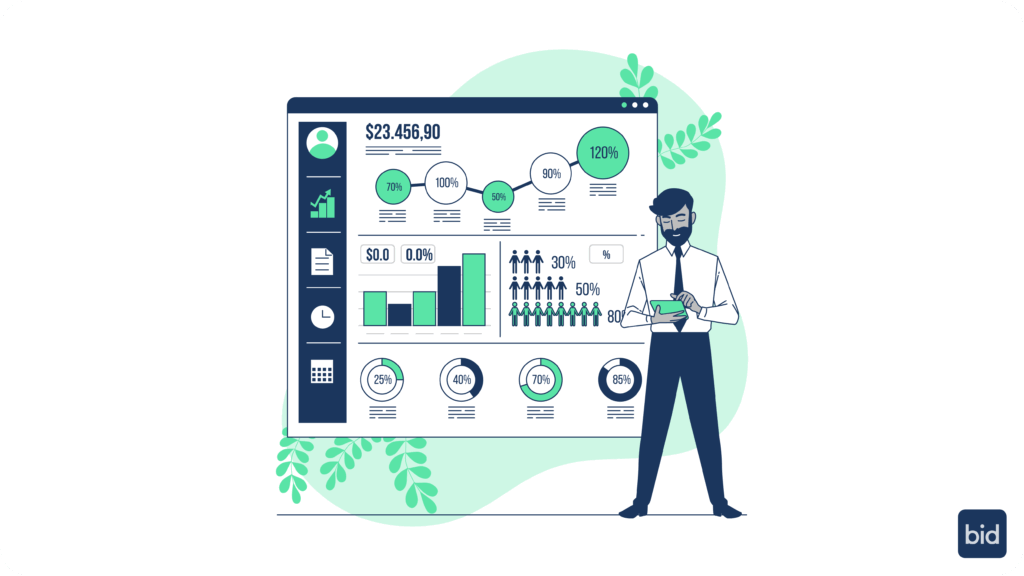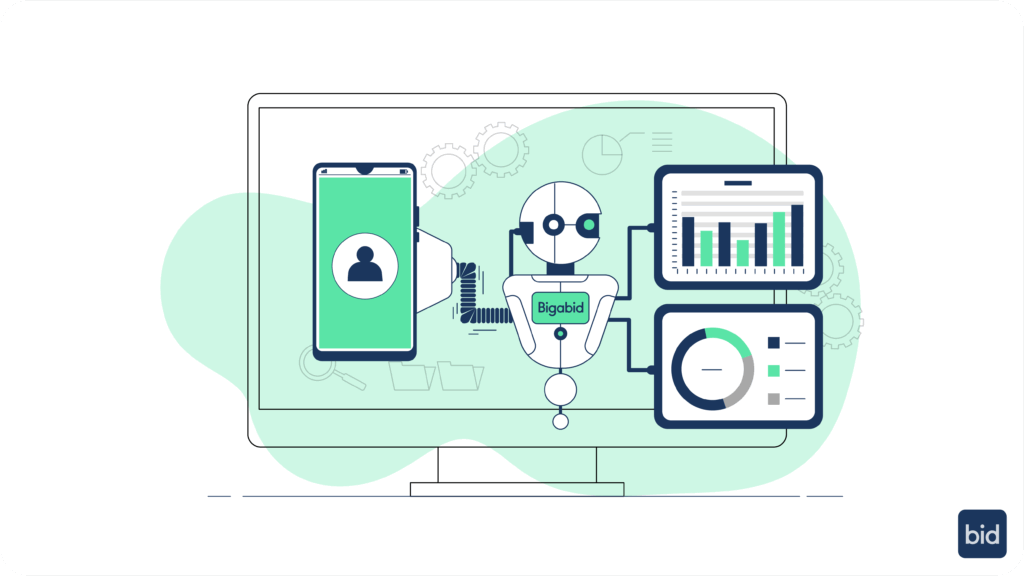
Remember when mobile advertising felt simple? You’d target by age, gender, maybe throw in some basic interests, and call it a day. Those campaigns worked because the competition was light, user behavior was predictable, and privacy regulations were barely a blip on anyone’s radar.
Those days are gone forever.
Today’s mobile advertising landscape resembles a high-stakes chess match played at lightning speed. Users jump between devices seamlessly, their intent shifts based on context we’re only beginning to understand, and traditional targeting methods are crumbling under the weight of privacy-first policies and algorithmic complexity.
The mobile marketers winning in this environment aren’t the ones with the biggest budgets—they’re the ones leveraging Deep Neural Networks to decode user behavior patterns that humans never could have identified.
This isn’t just another incremental improvement in ad tech. DNNs represent a fundamental shift in how we understand and predict user behavior, transforming mobile advertising from educated guesswork into precision science. This blog explores why DNNs aren’t just useful for mobile ad targeting—they’re absolutely essential for any marketer serious about thriving in the next decade of mobile marketing.

Let’s start with an uncomfortable truth: everything we thought we knew about mobile advertising is becoming obsolete, and it’s happening faster than most marketers realize.
The iOS 14.5 update sent shockwaves through the industry, but it was just the beginning. Apple’s App Tracking Transparency framework eliminated overnight attribution methods that entire marketing departments had built their strategies around. Suddenly, campaigns that had been profitable for years started bleeding money, and marketers scrambled to find alternative approaches.
But privacy changes are only part of the story. User behavior has evolved dramatically since the early days of mobile advertising. The average smartphone user now has over 80 apps installed and actively uses about 40 different apps monthly. They switch between devices throughout the day—researching on tablets during lunch, browsing on phones during commutes, and making purchase decisions on laptops in the evening.
This multi-device, multi-touchpoint journey creates attribution nightmares that traditional tracking simply can’t solve. When someone researches fitness apps on their work computer, downloads one during their evening jog, and makes their first in-app purchase three days later while waiting for coffee, which touchpoint deserves credit? Traditional attribution models struggle with these complex journeys.
Competition has intensified beyond recognition. Global mobile ad spending has exploded, with millions of advertisers now competing for the same high-value users. The easy wins are gone. Basic demographic targeting that worked five years ago now produces mediocre results at best, because everyone else is using the same targeting criteria.
Platform algorithms have become increasingly sophisticated, but also more opaque. Facebook’s algorithm optimization, Google’s smart bidding, and TikTok’s interest targeting all rely on machine learning systems that traditional marketers can’t fully understand or control. To compete effectively, you need targeting sophistication that matches platform complexity.
The explosion of ad inventory across new channels compounds the challenge. Connected TV, audio streaming, gaming platforms, and emerging social networks all offer mobile advertising opportunities, but each requires different approaches and optimization strategies. Managing campaigns across these diverse channels with traditional tools becomes exponentially more complex.
Real-time bidding environments have accelerated beyond human comprehension. Programmatic auctions happen in microseconds, with thousands of variables influencing bid decisions. Human marketers simply cannot process information fast enough to optimize effectively in these environments.

Here’s where the technical magic happens, and why DNNs represent such a fundamental breakthrough.
Traditional targeting relies on explicit user data—demographics, declared interests, and basic behavioral signals. DNNs operate differently, using implicit pattern recognition to identify subtle behavioral correlations that humans would never notice.
The architecture starts with multi-modal data ingestion. DNNs simultaneously process text data from app descriptions and reviews, visual data from creative performance, temporal data from usage patterns, contextual data from device and location signals, and behavioral data from cross-app activity patterns. This comprehensive data fusion creates user representations far richer than traditional targeting profiles.
Embedding layers transform complex user behaviors into mathematical vectors in high-dimensional space. Similar users cluster together in this space, but the dimensions represent abstract behavioral patterns rather than obvious characteristics. A user might be similar to others not because they share demographics, but because they exhibit parallel app discovery patterns, engagement rhythms, or purchase decision sequences.
Attention mechanisms allow DNNs to focus on the most relevant signals for each prediction task. When predicting gaming app install likelihood, the network might prioritize recent entertainment app usage and evening browsing patterns. For productivity app targeting, it might focus on weekday usage patterns and professional app engagement. The same user data gets interpreted differently based on the targeting objective.
Recurrent layers capture temporal dependencies in user behavior. DNNs understand that a user’s current intent depends not just on what they’re doing now, but on the sequence of actions that led to this moment. Someone who’s been researching fitness apps for three weeks shows different intent than someone who just started looking yesterday.
Graph neural network components model relationships between users, apps, and behaviors. These networks understand that users influenced by similar apps, connected through social platforms, or exhibiting parallel usage patterns often share hidden characteristics that traditional targeting would miss.
The real breakthrough comes from transfer learning capabilities. DNNs trained on extensive datasets can apply learned patterns to new scenarios with limited data. If you’re launching an app in a new market or targeting a new user segment, the DNN leverages insights from similar situations to make informed predictions from day one.
Dynamic feature weighting means DNNs automatically adjust their focus based on changing conditions. During holiday seasons, purchase patterns might become more important than usual usage behaviors. During major app store updates, technical compatibility signals might temporarily override preference indicators. The network adapts without human intervention.
Ensemble modeling combines multiple specialized neural networks, each optimized for different aspects of user behavior prediction. One network might excel at identifying early-stage browsers, while another specializes in predicting purchase timing. The ensemble approach delivers more robust and accurate targeting than any single model could achieve.

The practical applications of DNN targeting are reshaping every aspect of mobile advertising, often in ways that surprise even experienced marketers.
Creative optimization reaches new levels of sophistication when DNNs predict not just which users will convert, but which specific creative elements will resonate with different audience segments. The network might identify that users showing high puzzle game affinity respond better to videos highlighting problem-solving mechanics, while users with action game preferences favor fast-paced gameplay footage. This goes beyond simple A/B testing to predictive creative matching.
Lookalike audience generation becomes remarkably precise. Instead of finding users who look similar based on obvious characteristics, DNNs identify users who behave similarly in subtle ways. They might discover that your highest-value customers share unusual app switching patterns or engage with content at specific times relative to their usage cycles, then find other users exhibiting these same behavioral fingerprints.
Budget allocation optimization transforms from manual guesswork into automated precision. DNNs can predict not just which users will convert, but when they’re most likely to convert and at what cost. This enables dynamic budget shifting—automatically increasing spend when high-value users show peak engagement signals and reducing spend during low-intent periods.
Cross-platform user journey mapping becomes possible at scale. DNNs track behavioral patterns across mobile apps, mobile web, desktop, and connected TV, creating unified user profiles that inform targeting decisions across all channels. When someone researches travel apps on desktop, the DNN can optimize mobile retargeting to reach them when they’re most likely to book.
Seasonal and contextual optimization adapts targeting strategies based on external factors that traditional models can’t process effectively. DNNs learn that fitness app engagement spikes differently in January versus June, that gaming app monetization patterns change during school holidays, and that productivity app adoption varies with economic news cycles.
Fraud detection and traffic quality assessment become integral parts of targeting optimization. DNNs identify patterns associated with bot traffic, click farms, and other fraudulent activities, automatically excluding these sources from targeting pools and protecting campaign budgets.
Lifetime value prediction enables sophisticated bidding strategies that optimize for long-term user value rather than immediate conversions. DNNs predict which users will become repeat purchasers, social sharers, or long-term engaged users, allowing campaigns to bid aggressively for these high-value prospects while reducing spend on users likely to churn quickly.
Competitive intelligence emerges from DNN analysis of user behavior patterns across similar apps. Networks can identify when competitors are running major campaigns, when market conditions are shifting, and when new opportunities emerge, enabling proactive rather than reactive campaign adjustments.

One of the most compelling aspects of DNN targeting is its effectiveness in privacy-constrained environments—solving the industry’s biggest current challenge.
Traditional targeting relied heavily on persistent identifiers and explicit tracking. When these methods became restricted, many marketers felt like they were flying blind. DNNs approach privacy differently, using behavioral pattern recognition that works effectively with anonymized, aggregated data.
Contextual targeting gets dramatically enhanced when DNNs analyze not just the immediate context, but contextual patterns over time. Instead of simply targeting “users reading sports content,” DNNs identify “users who engage with sports content during specific time windows and exhibit particular browsing patterns,” creating much more precise audience segments without requiring personal data.
First-party data maximization becomes crucial in privacy-first environments. DNNs excel at extracting maximum insight from limited first-party data sources. They can identify high-value behavioral patterns from minimal user interactions, making small datasets far more actionable than traditional analysis methods.
Probabilistic matching replaces deterministic tracking in DNN systems. Instead of trying to definitively identify individual users across devices and sessions, DNNs create probability-based user clusters that maintain targeting effectiveness while respecting privacy boundaries.
Federated learning approaches allow DNNs to improve targeting performance by learning from aggregated patterns across multiple advertisers and platforms without sharing individual user data. This collaborative approach improves everyone’s targeting while maintaining strict privacy controls.
On-device processing capabilities enable DNNs to analyze user behavior locally on individual devices, sending only aggregated insights back to advertising platforms. This approach provides rich behavioral insights while keeping personal data secure on user devices.
Differential privacy techniques add mathematical noise to training data, ensuring that individual user patterns cannot be reverse-engineered from DNN models while maintaining overall prediction accuracy.

The performance advantages of DNN targeting become clear when examining industry implementation results and comparative studies.
Targeting precision improvements are consistently reported across verticals. Gaming companies implementing DNN targeting typically see substantial improvements in user quality metrics—higher session frequency, increased in-app purchase rates, and extended user lifetime value. E-commerce apps report better conversion rates and higher average order values from DNN-targeted users.
Cost efficiency gains emerge from reduced wasted ad spend on low-intent users. DNNs identify and exclude user segments unlikely to convert, concentrating budget on high-probability prospects. This improved efficiency often translates to meaningful cost-per-acquisition improvements across campaigns.
Scale optimization shows particular strength with DNN targeting. Traditional targeting methods often see diminishing returns as campaign volume increases—audience quality drops as targeting criteria broaden. DNNs maintain targeting precision at scale by identifying subtle behavioral patterns that remain consistent across large user populations.
Cross-platform performance consistency represents a major advantage. Traditional targeting often requires different approaches and optimization strategies for each advertising platform. DNNs create unified user understanding that translates effectively across Facebook, Google, TikTok, and emerging platforms.
Attribution improvements come from DNNs’ ability to understand complex user journeys without relying on traditional tracking methods. This enhanced attribution accuracy helps marketers better understand true campaign performance and optimize budget allocation more effectively.
Time-to-optimization acceleration means DNN campaigns often reach peak performance faster than traditional approaches. While conventional campaigns might require weeks of optimization and testing, DNNs can identify effective targeting patterns within days of campaign launch.
Creative performance prediction enables proactive rather than reactive creative optimization. Instead of waiting for creative fatigue to impact performance, DNNs predict when specific creative elements will lose effectiveness and recommend refreshes before performance drops.

Successfully implementing DNN targeting requires strategic thinking beyond simply switching technology providers.
Data foundation assessment comes first. DNNs perform best with rich, diverse data sources. Audit your current data collection practices, identify gaps in user behavior tracking, and establish systems for gathering the behavioral signals that DNNs need for optimal performance.
Partner evaluation becomes crucial when choosing DNN-powered advertising platforms. Look for providers with proven neural network implementations, not just companies claiming to use AI. Ask specific questions about model architecture, training data sources, performance monitoring, and optimization capabilities.
Testing framework adaptation acknowledges that DNN optimization works differently than traditional campaign testing. These systems often show gradual performance improvements as they learn from additional data, requiring longer test periods and more sophisticated statistical analysis to properly evaluate effectiveness.
Team education investment ensures your marketing team understands how to work effectively with DNN systems. These tools require different optimization approaches and success metrics than traditional campaigns. Invest in training that helps your team leverage DNN capabilities rather than fighting against them.
Budget allocation strategy should account for DNN systems’ learning curves and performance trajectories. Plan for initial learning periods where performance might be inconsistent, followed by sustained improvement as the networks accumulate more behavioral data.
Performance monitoring requires new metrics and evaluation frameworks. Traditional campaign metrics remain important, but DNN targeting enables more sophisticated success measurement including user quality scores, lifetime value predictions, and cross-campaign attribution analysis.
Integration planning considers how DNN targeting fits into your broader marketing technology stack. These systems work best when integrated with customer relationship management, analytics platforms, and creative management tools to create comprehensive user understanding.

The mobile advertising industry is experiencing a fundamental realignment, and DNN adoption is accelerating the pace of change.
Early adopter advantages are becoming apparent across multiple verticals. Companies implementing sophisticated DNN targeting are achieving superior user acquisition efficiency while their competitors struggle with traditional methods. These performance gaps are widening as DNN systems accumulate more training data and improve their predictions.
Platform algorithm alignment becomes increasingly important. Major advertising platforms are building their own machine learning optimization systems. Marketers using DNN targeting can better align with platform algorithms, often achieving preferred placement and improved performance within platform auction systems.
Creative arms race dynamics emerge as DNN targeting enables more sophisticated creative optimization. Companies that combine advanced targeting with predictive creative optimization gain significant advantages over competitors using traditional creative testing approaches.
Budget efficiency competition intensifies when some advertisers achieve substantially better cost efficiency through DNN targeting. These advertisers can bid more aggressively for high-value audiences while maintaining profitability, making it harder for competitors using traditional methods to compete effectively.
Talent acquisition challenges arise as demand for DNN-savvy marketers exceeds supply. Companies that develop internal DNN expertise or partner with providers offering strong support and education programs gain sustainable competitive advantages.
Market consolidation pressures increase as the performance gaps between DNN-powered and traditional campaigns widen. Smaller advertisers and agencies that fail to adopt advanced targeting methods may find themselves unable to compete effectively for premium audiences.
Innovation cycle acceleration means competitive advantages from DNN targeting continue expanding. Unlike traditional optimization methods that hit performance ceilings, DNN systems improve continuously as they process more data and incorporate new algorithmic advances.

The mobile advertising revolution isn’t coming—it’s happening right now, and the companies winning are those leveraging Deep Neural Networks to decode user behavior at superhuman scale and speed.
While your competitors debate whether advanced AI targeting is worth the investment, DNN-powered campaigns are already identifying your highest-value users, predicting their behavior patterns, and optimizing creative delivery with precision that traditional methods simply cannot match.
The question isn’t whether DNNs will dominate mobile ad targeting—they already do. The question is whether you’ll be part of this transformation or left behind by it.
At Bigabid, our advanced neural network platform doesn’t just target users—it understands them. We’ve moved beyond simple demographic targeting and basic behavioral signals to sophisticated pattern recognition that identifies high-intent users before they even realize they’re ready to engage with your app.
Our DNN-powered DSP processes massive volumes of behavioral data in real-time, creating user insights that transform how you think about mobile advertising. We’re not just predicting which users might convert—we’re predicting when they’ll convert, how they’ll engage, and what creative elements will resonate most effectively.
Whether you’re scaling user acquisition campaigns across competitive verticals or re-engaging dormant users through precision retargeting, our neural network platform turns the complexity of modern mobile marketing into your competitive advantage.
The mobile advertising landscape has evolved beyond traditional targeting capabilities. Users are more sophisticated, privacy regulations are more restrictive, and competition is more intense than ever before. Success requires technology that can adapt, learn, and optimize at machine speed.
Ready to see what happens when cutting-edge neural networks meet mobile marketing expertise?
Get in touch with Bigabid today. Let’s transform your mobile advertising from guesswork into precision science.